A solid content strategy can produce amazing results for your business, like increased targeted traffic, more influence in your field, and increased revenue.
In this guide, you’ll learn how to create a content strategy framework. By implementing everything you’re about to learn, you’ll grow your search engine traffic, improve your authority, and bring more customers to your door.
This is our exact strategy when creating successful content marketing campaigns for our website and clients.
What Is A Content Strategy?
Content strategy refers to creating and managing digital media to achieve specific business goals. This can include written, audio, and even video content.
Overall, your content creation strategy aims to bring your company measurable results, whether related to more visitors, greater brand awareness, or more customers in your sales pipeline.
A content strategy isn’t just SEO or content marketing, either. But it encompasses both of these channels.
It can be defined as the set of guidelines to help plan, create, and manage your content.
Why Is A Content Strategy Important?
Without a content development strategy, achieving any business goals you’ve decided upon will be hard.
Instead of working from a detailed plan, you’ll follow the publish-and-pray approach of writing random articles and hoping they move the needle.
On the other hand, a documented content marketing plan can help with the following:
- Make you way more effective at content marketing
- Make you less stressed and frazzled (you have a detailed map you’re following)
- Have more time for content promotion and other aspects of your digital marketing strategy
- Able to dedicate more time, energy, and money to your content efforts
Here are a few reasons you’ll want a content strategy in place:
It supports your larger business goals.
With an overarching content marketing strategy in place, you’ll be able to see how your content efforts support larger goals.
Even goals that seem more ethereal, like improving brand awareness and growing website authority. A robust content creation strategy can even attract high-level employees into your world.
Without a content strategy, your onsite and offsite content creation efforts don’t fit the puzzle, and you’ll be wasting your time and money.
You can see what’s working.
Even the best-laid-out website content strategy won’t always deliver the results you anticipated. Predicting what will succeed is difficult, and this is doubly true if it’s your first time executing a content creation strategy.
To succeed, you’ll need to test, experiment, and refine your strategy continuously. Luckily, there are tools that will give you accurate data and feedback so you can see what your readers and visitors are responding to most.
It helps you publish quality content consistently.
Succeeding with content marketing requires a consistent publishing schedule. You need to have your articles mapped out and a clear direction as to where you’re heading.
Publishing content isn’t about volume alone but covering every topic you want to highlight in-depth. Instead of publishing one-off content pieces whenever you feel like it, you’ll be able to publish a steady flow of content.
This also provides feedback on other goals, such as giving you more data to work with when refining your strategy.
How to Develop a Content Strategy
These are the steps to follow to create a content strategy:
- Set your business goals
- Define your target audience
- Research your audience's content needs
- Identify what's working for competitors
- Run a website content audit
- Develop a content marketing plan
- Create the best content possible
- Optimize your content for the web
- Publish and promote your content
- Measure the effectiveness of your content strategy
1. Set your business goals
Content marketing can be very effective, but it’ll be hard to generate an ROI if you don’t have goals you can aim towards.
Without creating tangible and achievable goals, it’ll be nearly impossible to determine if your content is hitting the mark.
Here are some common goals that you can model your strategy after:
- Improve brand awareness
- Grow the number of leads
- Improve overall revenue
- Increase organic traffic
We can also take these a step further and tie them to trackable metrics like:
- Get 25 brand mentions/links from websites with a DA of 50+
- Increase email subscribers by 200%
- Grow organic traffic to 100,000 visitors per month in 6 months
2. Define your target audience
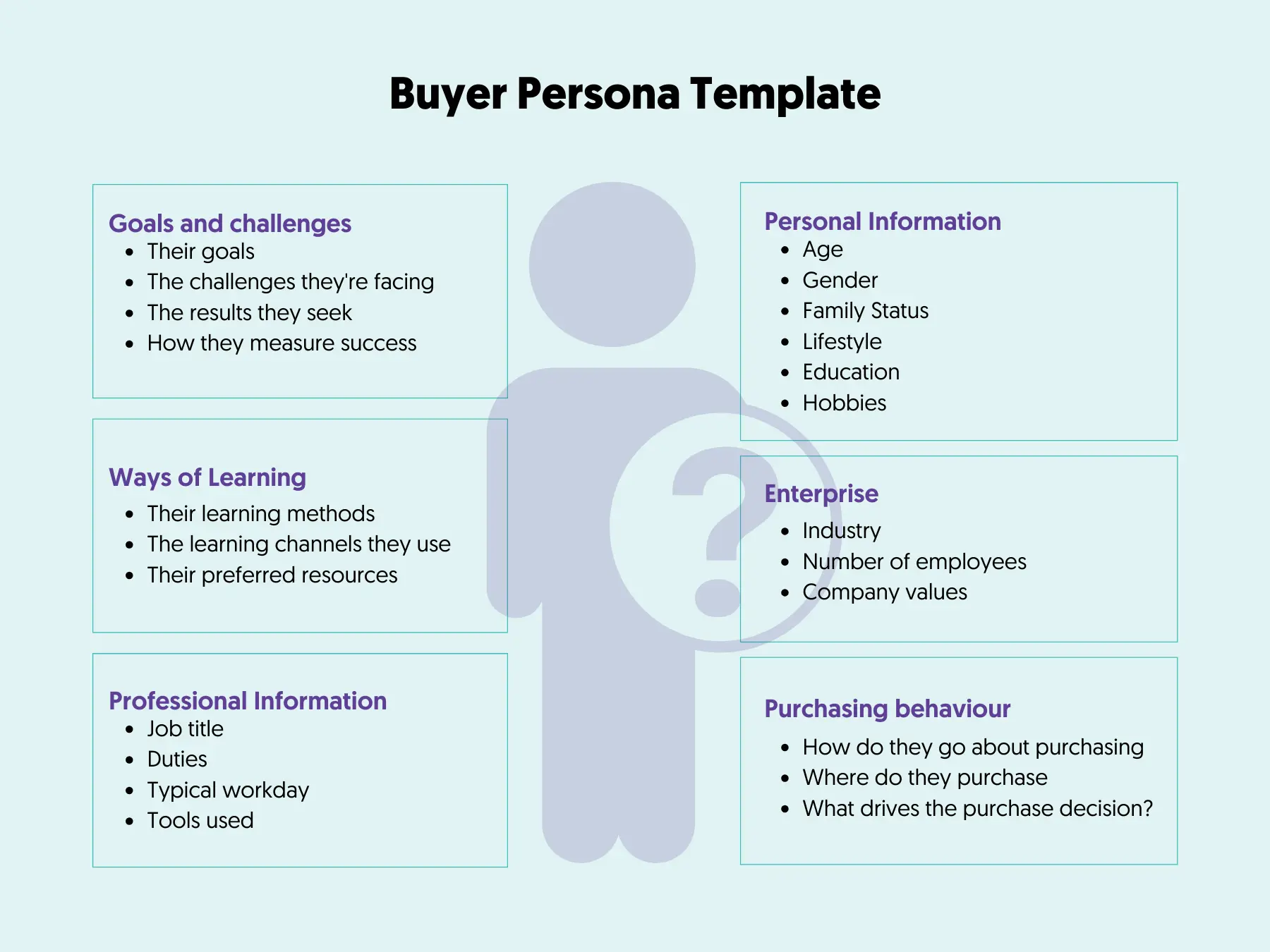
Who are you targeting with your content? And no, anyone who has an internet connection isn’t narrow enough.
Your audience will dictate not only what you write about but how you write and promote your content.
Get this step wrong, and you’ll be publishing content to nothing but crickets.
When narrowing down on your audience, you’ll want to define their lifestyle, problems, needs, and concerns.
Depending on your business, you might be speaking to multiple different buyer personas, as well as people who are at different parts of the customer lifecycle.
Keep in mind that your audience isn’t wholly made up of buyers as well. Your audience is simply the overarching group of people who are interested in your topic. This also includes followers, buyers, and advocates who buy and spread the word about your brand.
Here are some questions you can ask to pinpoint your target audience:
- What’s the age, gender, and education level?
- What’s the average income?
- What are their hobbies and interests?
- What problems do they have?
- What are their goals and dreams?
- What websites do they love?
- What social networks do they use the most?
- What books and magazines do they read?
- How do they research before making a purchase?
When creating content, you’ll be writing directly toward these buyer personas.
3. Research your audience content needs
When planning out your content, it can be helpful to research what your audience is already looking for. By creating content that serves their needs, you’ll cut out a ton of guesswork and ensure your readers will be interested in your content.
Here are two ways you can uncover your audience’s desires:
Keyword research
By doing keyword research, you’ll find keywords that can send you relevant traffic, along with hidden gems you can target and rank for quickly.
As you research, you’ll start to notice trends or groups of topics your audience is the most interested in.
Using a tool like SEMRush you can uncover valuable keywords your competitors are targeting, along with keywords worth building your content around.
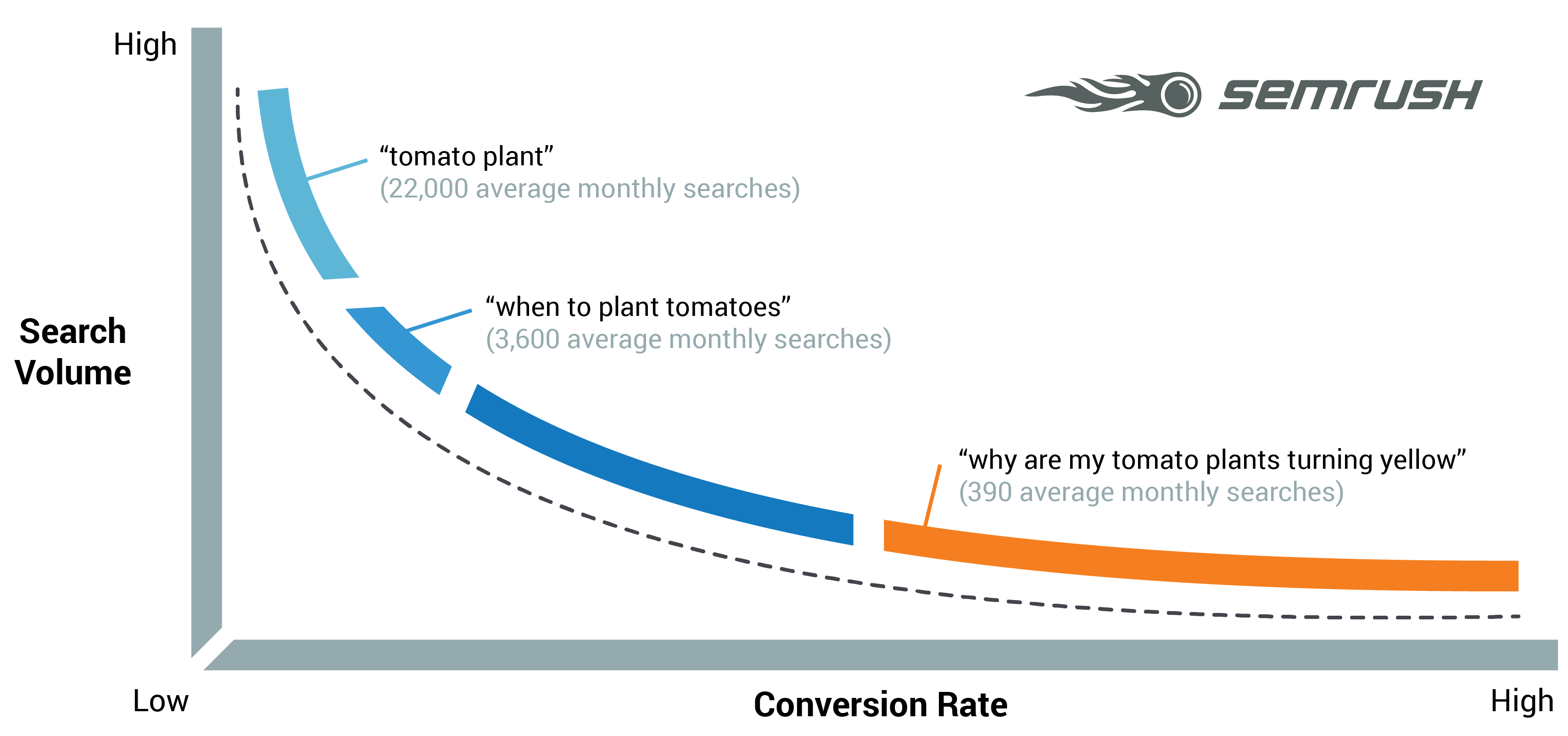
User intent
This is covered in more detail below, but user intent refers to what your users search for when they type a keyword into Google.
The more you can closely satisfy user intent, the higher your content can rank.
There are three types of searches that keywords will fall under:
- Searchers want more information about a topic
- Searchers are looking for a website
- Searchers are looking to make a purchase
The quickest way to determine user intent is by seeing what kind of content ranks the highest in the search engines. This will help to inform the type of content you should be creating.
Search ideas - how to use various tools to find content topic ideas for your campaigns.
4. Identify what's working for competitors
When crafting your strategy, there’s no reason to go in blind. You can see what your competitors have done successfully and any holes in their strategy you can capitalize on.
When you’re analyzing your competitors, there are a handful of questions you’ll want to keep in mind:
- How much traffic are they getting?
- What sources provide the most traffic?
- What keywords are they ranking for?
- What websites are linking to them?
- How well is their content performing?
- Are there any gaps in their content strategy?
The best tool for this is SEMRush. With SEMRush, all you have to do is input your competitor’s URL, and you’ll get information like:

- The organic keywords that send the most traffic
- The total number of keywords they rank for
- The pages that send the most traffic
- The top organic search competitors
5. Run a website content audit
To create a website content strategy that’ll succeed in 2024 and beyond, you’ll want to take stock of what’s currently working. If you’ve been creating content without a plan, you probably have a lot of dead content that isn’t serving your business.

A content audit will show you what content is serving your business and what’s holding you back.
Here are a few things you’ll want to analyze:
- What content is performing the best
- What content is underperforming
- How often do they publish content
- What keywords you’re currently ranking for
- Which pages/posts have the worst onsite metrics
- Which pages/posts are causing visitors to leave your site
The information you gain here will help you better understand how your site performs and what kinds of content already bring you results.
Once you know what content is underperforming, you can either eliminate it or repurpose it into something more valuable.
Resources to Learn More
- How to perform a content audit - find and fix thin content pages on your website.
- How to perform a website review - how to review your website (besides content)
- Content audit process - how to do a content audit (with template)
6. Develop a content marketing plan
By now, you should have a solid understanding of the following:
- Your existing content, how it performs, and what’s worth keeping
- The exact target audience you’re creating content for
- The goals you’re trying to achieve with your content strategy framework
- The type of content you’re creating and the keywords you’re targeting
Now, it’s time to put all of this into a content marketing plan. Here are some of the elements your content marketing plan will include:

- Who’s responsible for creating the content
- What stage of the sales funnel will each article address
- The format of the content to be published
- When will the content be published
- The steps you’ll take to promote the content
Resources to Learn More
- Content marketing checklist - a comprehensive checklist to follow when developing a content marketing plan
- Content marketing courses - a list of courses to help you understand how to implement content marketing campaigns
7. Create the best content possible
This was mentioned briefly above, but you should always aim to create better content than your competition. As you analyze the search results, take note of how you would improve what’s currently ranking the highest.
This could be several factors like:
- Writing in an easier-to-digest format
- Including more media like pictures and videos
- Adding graphics to create a better user experience
- Creating a longer article that covers every aspect of the topic
- And on and on
Follow E-E-A-T
EAT stands for experience, expertise, authoritativeness, and trustworthiness and is how Google evaluates the credibility of a website on a given topic. Scoring high on these metrics will help you rank higher.
Here’s how it breaks down:
- This means you have a high level of knowledge and expertise on a given topic.
- This means you (or your website) have a solid reputation in your space, whether from users, other websites, or third-party reviews.
- This includes content accuracy, legitimacy, transparency, and contact and business information.
Create pillar pagesPillar pages
seek to be the absolute best piece of content for a given keyword or topic. Generally, these will be much longer than traditional blog posts.
There are two approaches to pillar pages. The first is creating a long, in-depth article covering every topic in detail. Or, it can be a category page that links to other relevant articles you’ve written.
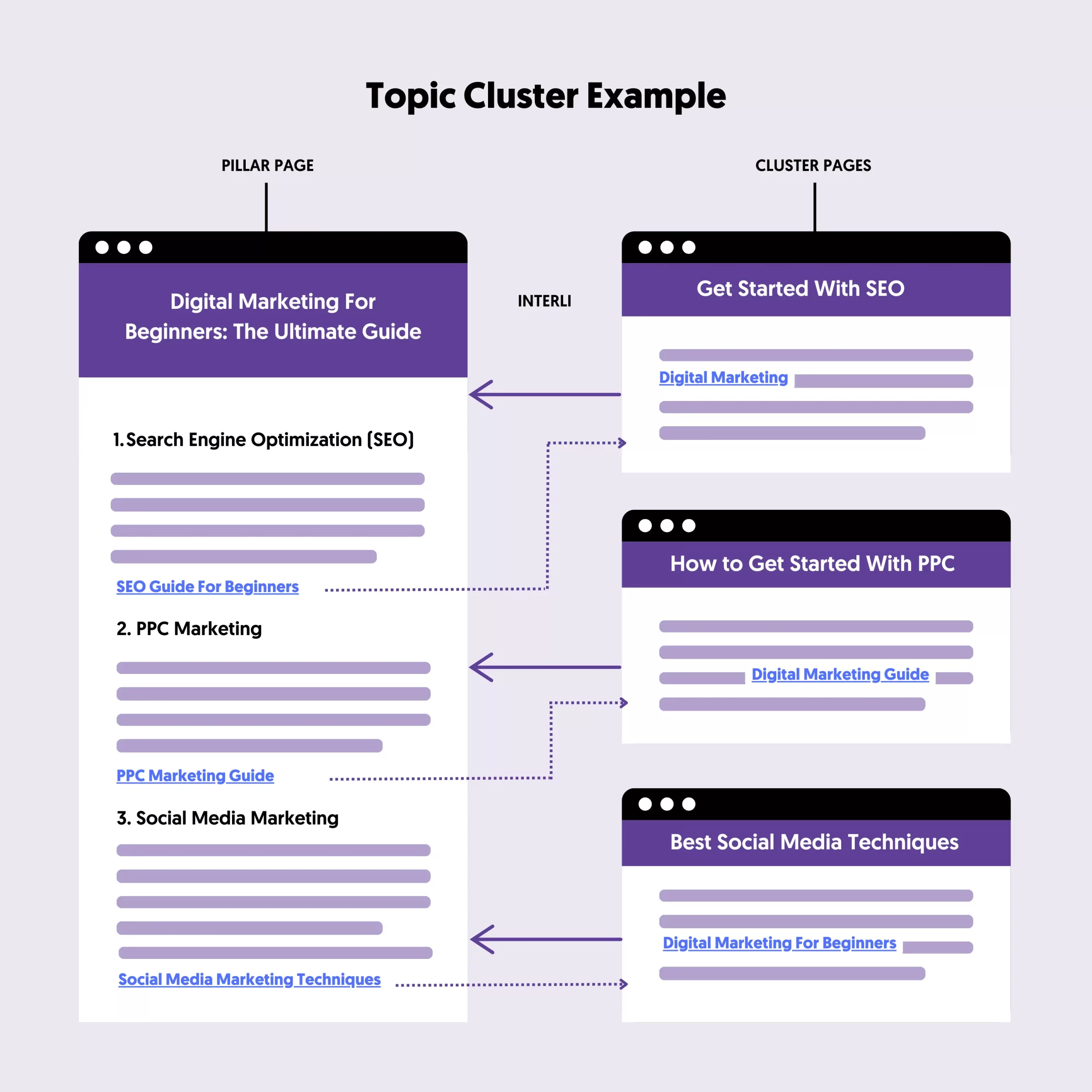
Pillar pages can boost search engine rankings, along with uniting different categories of content across your website.
Here are some tips to keep in mind when you’re creating pillar pages:
- Look for topic clusters (content that can be grouped into a category) within your existing content
- Combine this content into a bigger post, or a category page with links to every relevant article
- Do keyword research to find high-traffic keywords you can target
- Write the absolute best article on your chosen topic/set of keywords
Utilize different content formats
Blog posts aren’t the only type of content you should be creating. Ideally, you’ll create multiple content forms to cater to every audience member.
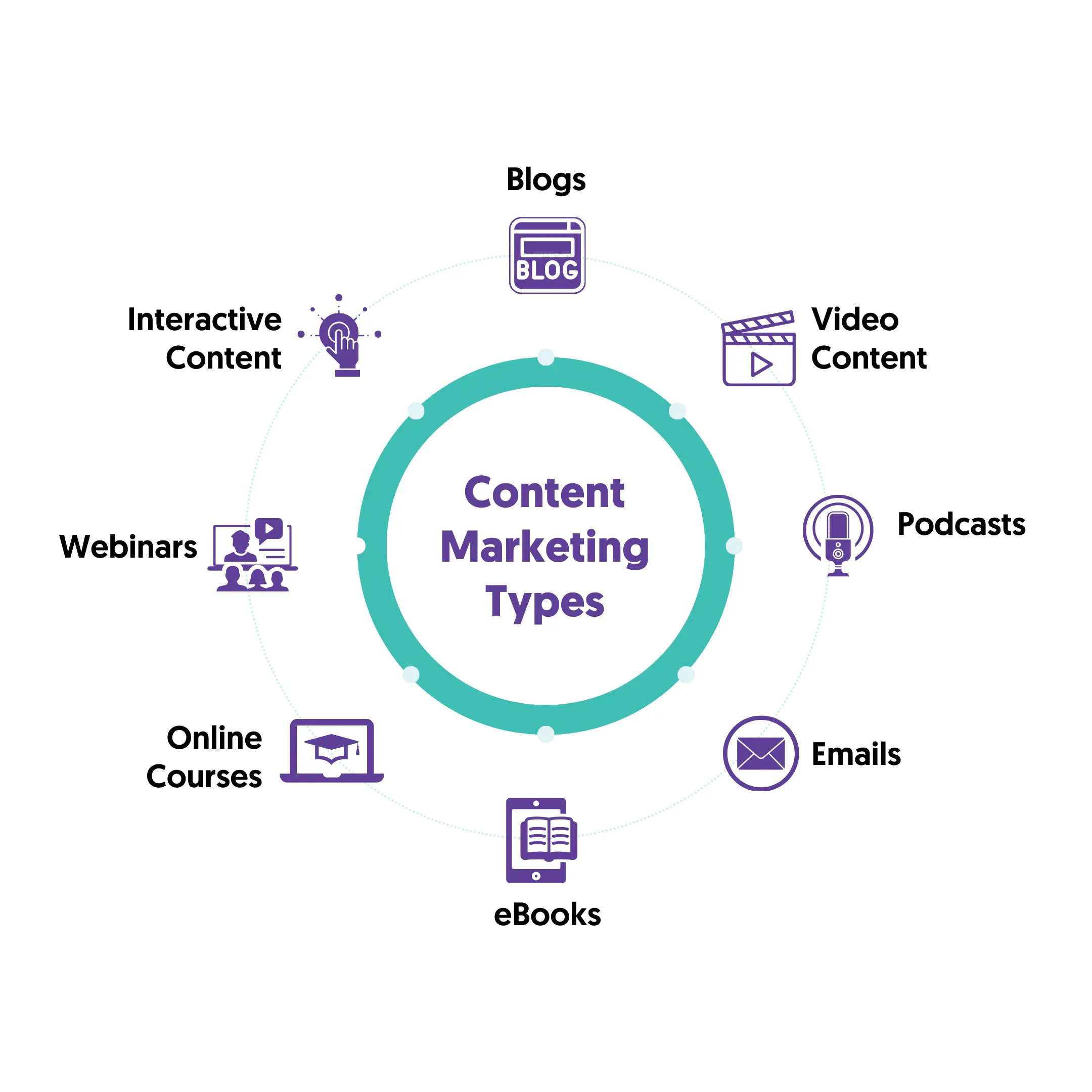
Some of your visitors will like to read, while others will prefer video, interactive content, or downloadables like PDFs.
Here’s a quick look at some of the different forms of content you can create:
- Studies and data-backed content, written interviews, and more
- Video content like podcasts, how-tos, webinars, and live events
- Visual content like slideshows and infographics
- Interactive content like quizzes and tests
- Downloadable PDFs like eBooks, checklists, tutorials, and white papers
One way to maximize your content creation strategy is to repurpose your content. Once you’ve published an article, you can:
- Transform it into an infographic
- Create a slideshow presentation
- Create shareable social media graphics
- Write a longer eBook from popular articles
8. Optimize your content for the web
Even if you have incredibly well-written content, it will be hard to rank if it’s not optimized correctly.
On-page SEO is usually overshadowed by off-page SEO factors. However, by getting on-page right, you’re laying a solid foundation to make your other SEO efforts much easier.

Here are a few key elements of proper content optimization:
- Make your URLs short and readable; include your target keyword if possible
- Optimize your page titles with your target keyword and a compelling headline
- Include your target keyword within the first 100 words of the body content
- Add relevant and related keywords to your post
- Create content that effectively answers your target keyword (usually over 2000 words)
- Link out to authoritative resources that enhance your content
- Interlink your content to other valuable articles you’ve written
A lot more goes into proper SEO blog writing, but the tips above will help your content rank higher and start moving in the right direction.
9. Publish and promote your content
By now, you’ve accomplished much of the hard work of research, planning, and executing your content strategy.
But your work isn’t done yet. Planning and content creation are only half the battle. Now, it’s time to promote your content.
One great way to do this is strategically mentioning well-known brands within your content. Then, when you publish the post, you can reach out to them via email or social and let them know they’re mentioned in the post.
This is a great way to improve social shares and brand mentions while providing value to influencers and authorities you’d love to connect with.
For example, in this article on the best free SEO courses, I mentioned SEMRush. They shared the post, which resulted in many social shares and likes.
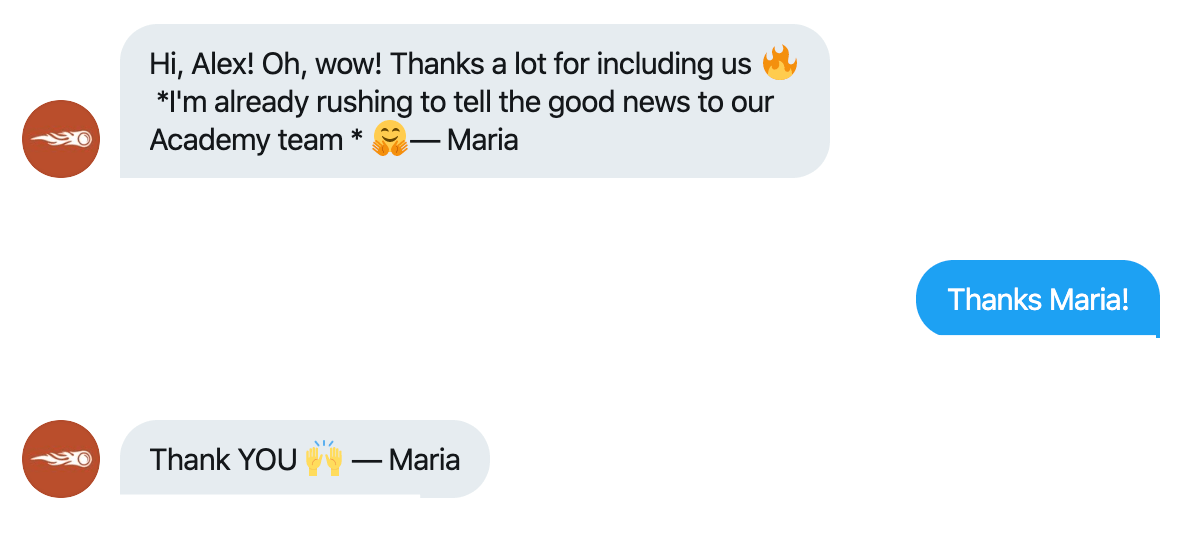
There are a handful of other ways you can promote your content as well, for example:
- Social media. Promote your article on any active social profiles
- Email outreach. Reach out to blog/website owners who have linked or shared similar content in the past
- Paid ads. Run paid ads to your published article (it helps if your article is monetized in some way)
- Syndicate your content. Re-publish your article on relevant platforms like LinkedIn, Medium, or Quora
Each platform you use to promote your content will have its own guidelines and best practices. Over time, you’ll learn which platforms give you the best response and help you achieve your content goals.
10. Measure the effectiveness of your content strategy
The only way to create a content strategy that brings your business results is to analyze how your content is performing. This will help you determine what content/topics connect with your audience and what’s helping you reach your goals.
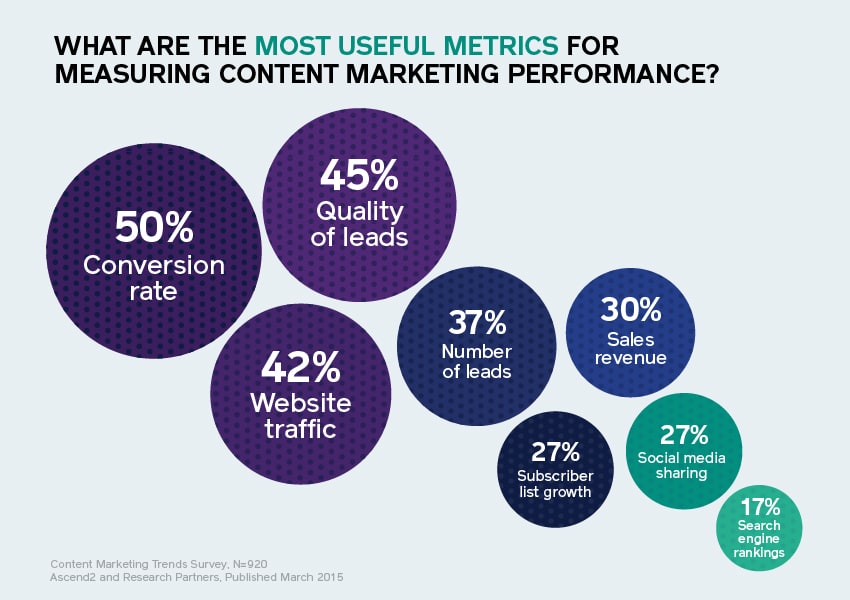
Here are a few content KPIs to measure:
- User engagement - This refers to how your visitors interact with your content via shares, comments, and mentions from other websites
- User behavior - This includes the number of unique visitors, bounce rate, page views, time on site, etc.
- Organic search traffic - You’re looking for increased organic traffic, the number of keywords you rank for, and more backlinks.
- Conversion rate - This could be more leads, better conversion rates, more email subscribers, or more products purchased.
Remember that content marketing is long-term and requires patience to see results.
Content Strategy Examples
There are countless examples of successful content strategies you can draw inspiration from.
Here are some of my favorite examples:
Canva
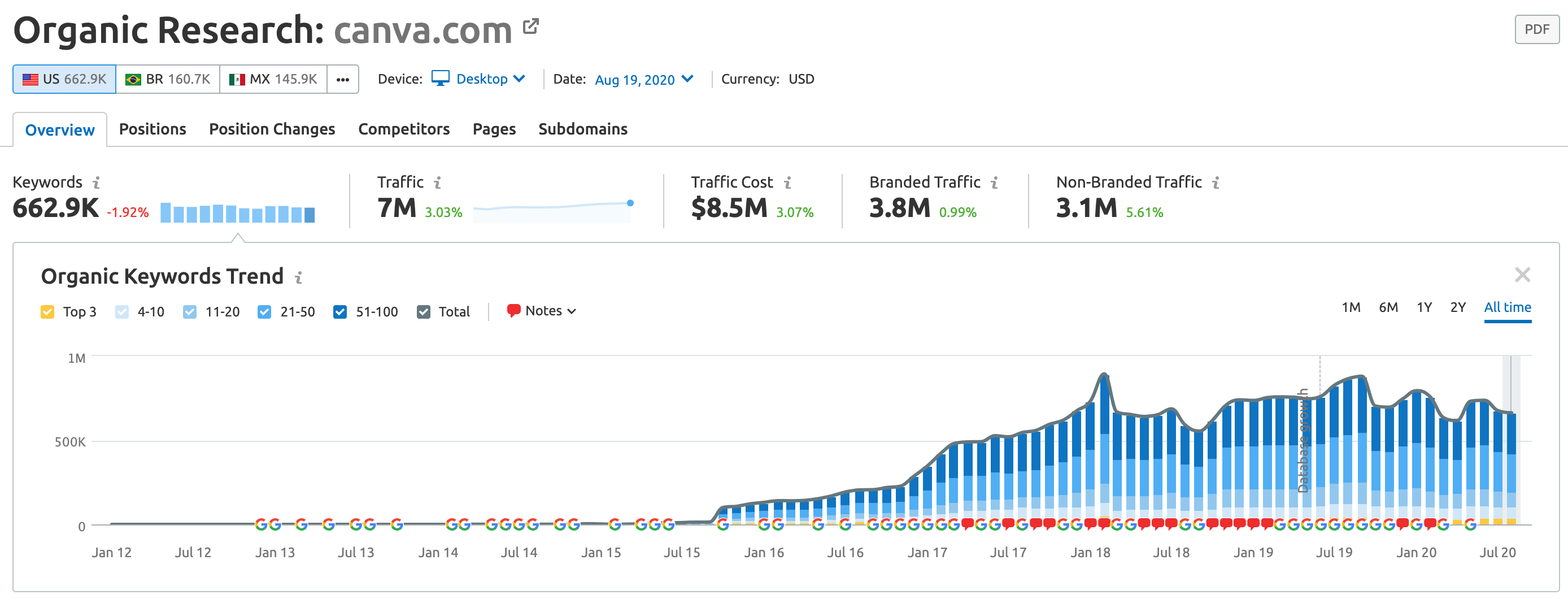
Canva is a unicorn startup valued at over $3.2 billion (link). Much of that growth has been due to a stellar content strategy and search engine rankings. They get over 7 million visitors per month from organic rankings alone.
A big catalyst for this growth was the focus on using guest blogging to grow authority from day one.
Hotjar

Hotjar is a SaaS company that specializes in heat mapping software for websites.
Even as a smaller SaaS company, its blog has over 100,000 monthly visitors. One of the core reasons is how detailed they go with their content.
For example, they rank for nearly every keyword related to heatmaps and tend to dominate the long-tail rankings.
Key Learnings
Creating a content marketing strategy can seem like a ton of time spent upfront, but you’ll reap the rewards from all this planning for years to come. The more effort you put into publishing and promoting quality content, your authority, traffic, and revenue will grow.
Without a content strategy in place, you will have difficulty achieving any results with your content.
Your content strategy is something you refine over time. The more you publish and the more experiments you run, the more data you’ll have to work with, and the better you’ll understand your audience.
Content strategy is a long-term investment.
You can reach your target audience with an effective content strategy while boosting traffic and revenue. Regarding long-term investment, you’ll have difficulty finding something more valuable than a content marketing strategy.



